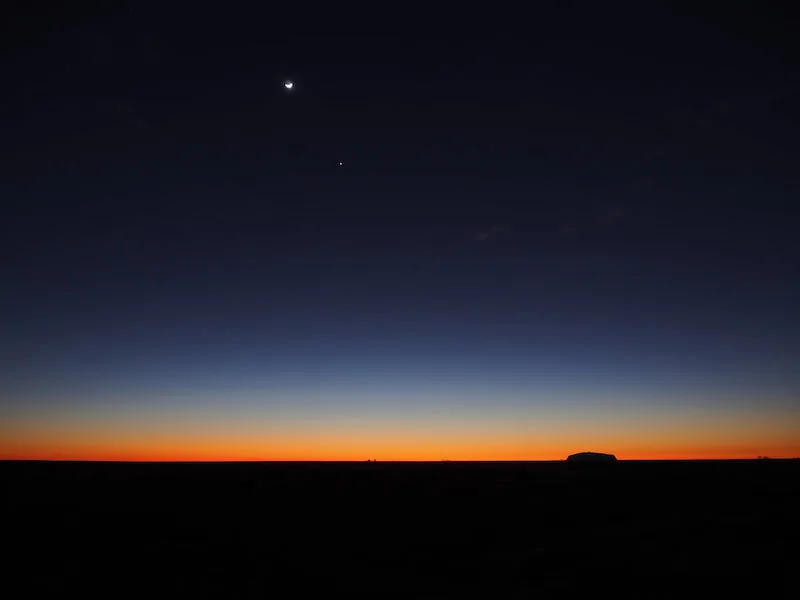Which planet is known as the Evening Star?
The Shepherd’s Star: Why is Venus Called by This Name?
Indeed, Venus can reach a magnitude of -4.6, which is very VERY brilliant. Magnitude is an indicator used in astronomy to determine the apparent brightness of a celestial body in the sky. The brighter an object is, the lower its magnitude. For example, the full moon has a magnitude of -12.
And what’s the connection between Venus and shepherds, you might ask?!
Due to its strong brilliance for much of the year, Venus is the first planet in the Solar System to appear in the twilight sky and the last to disappear at dawn. It has therefore long been a landmark for men and women who lived outdoors, particularly shepherds, who led their flocks and measured time by observing the movements of stars and planets. Hence its nickname, the Shepherd’s Star.
Moreover, in antiquity, before its planetary nature was understood, many cultures believed it was two distinct stars—one appearing before sunrise and the other after sunset. This is why Venus is also nicknamed the Morning Star or Evening Star depending on the time of year.
This apparent duality gave rise to mythological interpretations, and Venus has often been associated with deities linked to love, beauty, and femininity. For example, in Roman mythology, Venus is associated with the goddess of love, beauty, and fertility.
How to Find the Shepherd’s Star in the Sky?
Venus is close to the Sun in the solar system. As indicated by IMCCE, Venus can be observed in the east just before sunrise as the morning star, or in the west just after sunset as the evening star. However, it’s impossible to observe it both morning and evening on the same day.
At night, Venus is invisible because it’s located between the Sun and Earth, so it’s outside our field of vision.
However, it’s sometimes possible to observe Venus at night depending on its elongation, that is, the perceived distance between Venus and the Sun from Earth. High elongation means Venus is “far” from the Sun and is positioned high in the sky.
These periods called maximum elongation are the best times of the year for observing Venus with a telescope! To determine Venus’s position in advance as well as the most favorable months for observing this planet, we strongly recommend using an application such as Stellarium.
Obviously, you’ll absolutely need a cloudless and light-free sky to observe it at night through a telescope under optimal conditions.
What are the Differences Between the Shepherd’s Star and the North Star?
The Shepherd’s Star is a planet, the planet Venus, while the North Star is a fixed star located near the celestial north pole.
We regularly confuse the Shepherd’s Star with the North Star… Yet these celestial bodies have absolutely nothing in common.
The North Star is a true star, like our Sun, located several million light-years from our Solar System. It’s a star whose position is fixed, situated near the celestial north pole. It appears as the brightest star in the Little Dipper and serves as a reference for determining north in the night sky. It’s a very useful star in astronomy as it allows for polar alignment of a telescope with an equatorial mount.
In contrast, Venus, the Shepherd’s Star, is a planet orbiting the Sun, and its position in the sky changes regularly based on its position relative to Earth and the Sun.
The major difference between these two luminous celestial bodies is that, unlike the Shepherd’s Star, the North Star will be visible all year round in the northern hemisphere sky.
What is the Transit of Venus?
The transit of Venus is a rare astronomical event that occurs when the planet Venus passes between Earth and the Sun. During this period, it appears as a small black dot moving slowly across the Sun’s surface. This rare phenomenon occurs twice approximately every 100 years, in pairs separated by eight years.
During the transit, Venus is perfectly aligned with Earth and the Sun, forming a sort of eclipse, but of an entirely different nature. Due to the size difference between Venus and the Sun, the planet appears as a tiny black disk moving in front of the Sun’s enormous luminous disk.
Venus transits have played a crucial historical role in the history of science and astronomy, particularly in the 18th century, when scientific expeditions were organized to observe these events from different locations around the globe. We particularly remember the adventurous expedition of French astronomer Guillaume Le Gentil, who wanted to observe the 1761 Venus transit in Pondicherry, India… And who returned empty-handed to France 11 years later after many adventures! The e-penser YouTuber’s episode dedicated to Guillaume Le Gentil’s expedition is hilarious!
